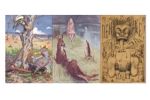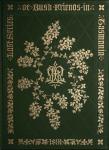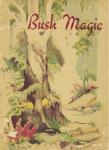AustLit
-
Louisa Anne Meredith's Tasmanian texts for children combine prose, poetry, and drawings (both botanical and decorative) to sing the praises of Nature. Her message is one of wonderment at the beauty and diversity of nature as well as respect for the environment. These sentiments are influenced by her belief that nature has a strong spiritual connection to a 'higher power'. Kordula Dunscombe (1998) argues in her article on the works of Meredith that "It is heartening to look back on C19th colonial literature for children and see, amongst the messages of domination, exploitation and general disrespect for the environment, that other paradigms of the land were also offered to child readers." It is the intention of this Exhibition to present a number of resources that will provide material for those with an interest in ecocriticism in children's and young adult literature to explore the extent to which these other paradigms were offered. These early texts could then be examined in the light of contemporary environmental texts available to young readers today.
The Trail focuses on the work of Louisa Anne Meredith but includes a number of other CLDR texts which display a range of early attitudes to the environment.
Trail created by Cherie Allan.
-
Bush Friends in Tasmania: Native Flowers, Fruits and Insects, Drawn from Nature, with Prose Descriptions and Illustrations in Verse demonstrates Meredith's capacity for observation of the natural environment in which she and her family live. Her keen eye undoubtedly contributes to the depth of her knowledge and understanding of the Tasmanian environment evident in this book of poetry and prose. The text focuses on the flora of Tasmania and includes a number of illustrations of flowers, fruits, and insects that are of botanical standard. This work takes an environmental stance by protesting against so-called "improvements" such as the building of a bridge that, while making travel easier, has destroyed parts of the surrounding forest.
Warning: While this volume is preoccupied with the natural environment Meredith recounts an incident (see especially pp. 52-53) whereby Aboriginal people are accused of murdering a settler family, the Hoopers. Her description of the Palawa people and distortion of the facts is offensive and should be treated with caution.
One way to approach the offensive section of the book could be to interrogate the attitudes expressed and the use of language to position readers to see only the 'white' perspective.
-
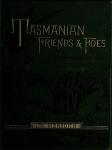 Lina decides to write to her English cousin Sibyl about the exciting and unusual flora and fauna of Tasmania. She does so through relating anecdotes about encounters with wildlife. The book also contains beautiful colour plates depicting some of the flora and fauna mentioned. (...more)See full AustLit entry
Lina decides to write to her English cousin Sibyl about the exciting and unusual flora and fauna of Tasmania. She does so through relating anecdotes about encounters with wildlife. The book also contains beautiful colour plates depicting some of the flora and fauna mentioned. (...more)See full AustLit entryMeredith's daughter, Lina, who writes to her English cousin Sibyl about the unusual flora and fauna of Tasmania is the narrator of this text. She does this by relating anecdotes about encounters the family has with wildlife. These encounters contrast with the action of the Bexley children, for instance, who display a disregard for the environment. The book contains beautiful colour plates depicting some of the flora and fauna mentioned. Lina implores her cousin to visit soon "before all the native things are killed". This plea demonstrates an early environmental awareness by the Meredith family at a time when colonists were intend on 'taming' the land.
Warning: This text revisits the incident relating to the death of the Hooper family (pp. 96-98) described in Bush Friends in Tasmania: Native Flowers, Fruits and Insects. Please refer to the abstract for that text (above) for more information on this issue.
-
 Some of My Bush Friends in Tasmania describes the native Tasmanian flora, fauna through poetry and descriptions accompanying illustrated plates. The author also writes about their life in rural Tasmania and wishes to describe to her English friends the flora and fauna encountered in this area. (...more)See full AustLit entry
Some of My Bush Friends in Tasmania describes the native Tasmanian flora, fauna through poetry and descriptions accompanying illustrated plates. The author also writes about their life in rural Tasmania and wishes to describe to her English friends the flora and fauna encountered in this area. (...more)See full AustLit entrySome of My Bush Friends in Tasmania : Native Flowers, Berries, and Insects, Drawn From Life, Illustrated in Verse, and Briefly Described looks at the native Tasmanian flora and fauna through poetry and descriptions accompanying illustrated plates. The author also writes about their life in rural Tasmania and describes the flora and fauna encountered in this area to her English friends . In this text Meredith warns of the consequences of exploitation of the environment noting that already some trees are in danger of 'extermination'.
-
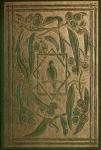 Loved and Lost comprises a collection of short verse. In her introduction to the poems, the author tells of her experience in raising an injured parakeet which then becomes the house pet. Meredith tells of its short life and untimely death and implores readers to not keep birds caged and in captivity. She advocates that birds should be let free and makes a case for this. The edition continues with verse about native Australian trees and flora, the fauna that make them their home, including the pet bird, and the story of the parakeet is continued in verse. (...more)See full AustLit entry
Loved and Lost comprises a collection of short verse. In her introduction to the poems, the author tells of her experience in raising an injured parakeet which then becomes the house pet. Meredith tells of its short life and untimely death and implores readers to not keep birds caged and in captivity. She advocates that birds should be let free and makes a case for this. The edition continues with verse about native Australian trees and flora, the fauna that make them their home, including the pet bird, and the story of the parakeet is continued in verse. (...more)See full AustLit entryLoved, and Lost! comprises a collection of short verses. In her introduction to the poems, the author tells of her family's experiences in raising an injured parakeet which then becomes the house pet. Meredith tells of its short life and untimely death and implores readers to not keep birds caged and in captivity. She advocates that birds should be let free and makes a case for this. The edition continues with verse about native Australian trees and flora, the fauna that make them their home, including the pet bird, and the story of the parakeet is continued in verse. The author has made a series of notes referring to flora, fauna and significant people, events and cultural traditions mentioned in the verse.
-
This collection of poems was written by Meredith with the intention of educating school children of the day about the native fauna of Tasmania. It also attempts to generate respect for nature. For instance, it criticises hunting for sport rather than need.
-
This small collection of poetry describes the characteristics of a number of Australian birds such as the lyre bird, blue wren, and the whip bird. Mention is also made of the kookaburra, thrush, and bell-bird. The poetry and illustrations in this collection are rather sentimental and form an interesting contrast with the work of Louisa Anne Meredith.
-
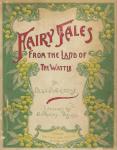 A collection of fairy lore tales with Australian surroundings intended to be as stories told by a child to younger children. (...more)See full AustLit entry
A collection of fairy lore tales with Australian surroundings intended to be as stories told by a child to younger children. (...more)See full AustLit entryA publisher's note at the start of this collection says these tales are "...offered here simply in the hope that they will not only amuse the young, but also win the approval of those to whom a loving study of tree and flower, bird and insect, and the association of familiar elements of old-world fairy lore with Australian surroundings, commend themselves." The inclusion of fairy lore may not have won approval from Louisa Anne Meredith but the author has structured many of the tales as 'how and why' or 'pourquoi' stories which are narrative explanations for particular characteristics of, for instance, animals, plants, or features of the landscape. The first story "The Origin of Wattle" is a classic example.
How do these stories differ from those written by Meredith?
-
The introduction to this text suggests that the teaching of “nature study” is no easy matter and that children’s interest needs to be maintained. To this end the central character, a little boy called Winks, is able to speak with the Seven Little Grey Men who, in turn, allow Winks to commune with the brownies and the pixies. The book does contain information on the landscape, the appearance and habits of birds and provides explanations for the creation of various flora such as wattle, the boronia flower and a number of other native plants. This latter function is achieved through a number of pourquoi tales in a similar manner to those in Fairy Tales from the Land of Wattle (compare for instance their explanations on how wattle flowers were created). Two strategies utilised in this book to raise awareness of “nature” are the employment of folk lore and anthropomorphism. The final sentence of the Introduction to the book states: I feel sure that they [the individual stories] will be read with pleasure by children, and that those who have read them will have a better insight into the natural life of their own country. Can an insight into ‘natural life’ be achieved through the use of folklore and anthropomorphism?
-
Read: In the Service of Infinite and Glorious Creation: The Nature Writing of Louisa Anne Meredith by Kordula Dunscombe.
This journal article is a comprehensive account of the texts written by Louisa Anne Meredith for children. It examines a number of common threads across these works including her love of and respect for nature which is motivated, in part, by her belief that the natural world has a strong spiritual orientation. Dunscombe examines the ways in which Meredith imposes a 'feminine' perspective on her writings on nature which then poses a challenge to a more traditional 'masculine' position.
Read: Gender and Landscape: Australian Colonial Women Writers by Delys Bird.
Delys Bird examines the positions adopted by colonial women on readings of the Australian landscape which accord with many of the sentiments expressed by Louisa Anne Meredith. Of particular interest is this comment by Bird on the 'feminisation' of the Bush: "Constructed from a female space, using what are considered peculiarly feminine forms, colonial women's writings allow for the possibility of a different perception of the landscape; enabling a challenge perhaps to the masculine bush legend; allowing an alternative to the male manipulation of the environment; enacting a response less potentially destructive than is the familiar pattern of fear and fascination, threat and desire that structures those official male accounts of the Australian landscape. Colonial women's writings may thus allow for another view of the new land."
Visit the Exhibition: Children's Literature and the Environment - www.austlit.edu.au/enviro
You might be interested in...

